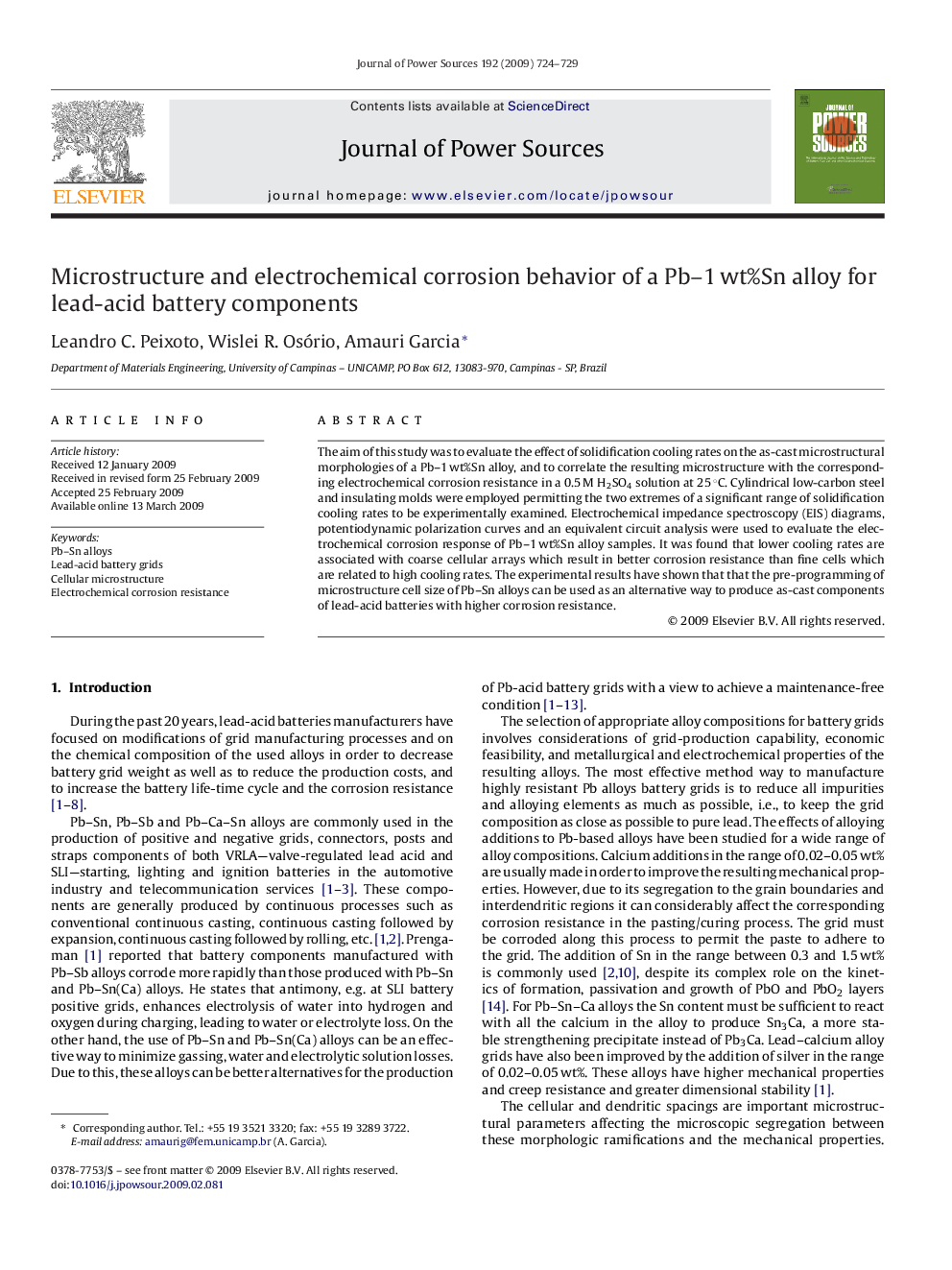| Article ID | Journal | Published Year | Pages | File Type |
|---|---|---|---|---|
| 1294164 | Journal of Power Sources | 2009 | 6 Pages |
The aim of this study was to evaluate the effect of solidification cooling rates on the as-cast microstructural morphologies of a Pb–1 wt%Sn alloy, and to correlate the resulting microstructure with the corresponding electrochemical corrosion resistance in a 0.5 M H2SO4 solution at 25 °C. Cylindrical low-carbon steel and insulating molds were employed permitting the two extremes of a significant range of solidification cooling rates to be experimentally examined. Electrochemical impedance spectroscopy (EIS) diagrams, potentiodynamic polarization curves and an equivalent circuit analysis were used to evaluate the electrochemical corrosion response of Pb–1 wt%Sn alloy samples. It was found that lower cooling rates are associated with coarse cellular arrays which result in better corrosion resistance than fine cells which are related to high cooling rates. The experimental results have shown that that the pre-programming of microstructure cell size of Pb–Sn alloys can be used as an alternative way to produce as-cast components of lead-acid batteries with higher corrosion resistance.
